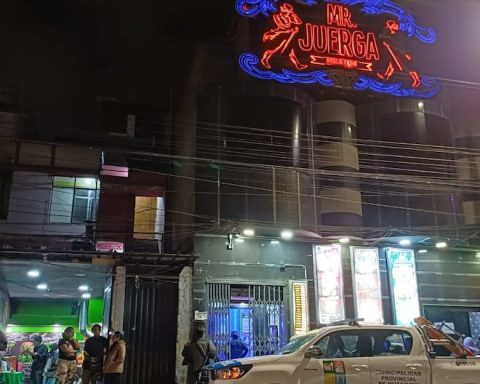Cuba swept the seven titles in dispute in the 62nd edition of the Caribbean Table Tennis Championships. A broom dressed in rackets, strong auctions, effective receipts and surgical services. A tricolor broom that speaks of the development that this sport has experienced in the last five years, mainly after the 2016 Rio de Janeiro Olympic Games.
Conscious and effective work on all possible fronts have been the order words of the president of the Cuban Table Tennis Federation, Bárbaro Oliva, and of all those who contribute to the evolution of this discipline in the country, because the fruits are being collecting from the base, ensuring a solid quarry, and strengthening a power in the Caribbean region that had been evident since the Central American and Caribbean Games in Barranquilla 2018, when our team won two titles, one silver and five bronzes, boosted by the male golden duo of Andy Pereira and Jorge Moisés Campos; and the efforts of the two of them together with Liván Martínez and Juan Damián Rondón in the team contest. To which they would add as another example of solidity the following year, their team bronze in the Pan American Games in Lima.
Then Puerto Rico (4-2-2), with the sister duo of Adriana and Melanie Díaz as main references, to the point of repeating their individual, doubles and team titles at the Pan American Games in Lima the following year; and Brian Afanador being his main letter in the men’s section.
Due to their absences from the impeccable Pabexpo, venue of the competition, our racket players had more options for success, which does not mean that the competition seemed like a panacea, far from it. In fact, behind each of the seven titles in dispute there are variables that we will try to elucidate below.
Videos: Courtesy of the Facebook of the Cuban Federation of Table Tennis.
At the epicenter of the contest
The first thing to note from the beginning of the contest is that Cuban table tennis is no longer exclusively about Andy Pereira, Moisés Campos or Liván Martínez. It is necessary to underline the bronze in singles of the young Adrián Pérez, and the team gear evidenced by the three of them in the absence of Andy and Eday Gómez. The latter and Adrián had already shown arguments in the I Junior Pan American Games in Cali-Valle and in the Mexican Team League.
Although Moisés pulled the car with his crowns in singles, men’s doubles, by groups and in mixed doubles, a gear was seen between each of the members of the army.
Logically, Moisés has a higher level, forged for more than ten years between the International Training Center of Köpeng, Sweden, and recently and thanks to the policy of hiring Cuban athletes abroad, in the first division of the Italian League, where he trains with the national team of that country, and disputes the Portuguese club tournament.
To which he adds his status as a double Olympic contestant, and the ability to get along with the best racket players on the American continent, with the exception of the Brazilian escapee and third in the world ranking, Hugo Calderano.
In the case of our representative, we are also talking about a versatile player, who dominates the game at all distances from the table, with an aggressive and intelligent service, and a high capacity for tactical unfolding, in correspondence with the level of the opponent and different game situations. He able to control the times, and dispose of his resources at the right time.
We saw some of these virtues replicated during the competition in other of our players, essentially Liván and the youngest Adrián, in addition to mistakes made and having been carried away by the situational temperature on some occasions.
On the female side, that responsibility fell on another who, at the age of 19, also had her first experience under the five rings in Tokyo: Daniela Fonseca from Matanzas. The yumurina was the benchmark for the women’s team and her duo with the talented Karla Pérez seemed lethal for her opponents. We already know about her fiery power together with Moses; and on this occasion her teammate Idalys lovet, second racket of the Greater Antilles, made the most of her game to prevail in an individual final nuanced by the ethics and good game of both.
Right there another virtue of our teams emerges: the responsibility to play, grow and learn from mistakes for the good of the team, listen to the most experienced, be faithful to the technical-tactical corrections of their mentors, make the appropriate adjustments and get the best dividends to them, whether in terms of placement of serves, search for short effects or blocking of opposing offensive actions, shots or effects of greater caliber, and speed shots to dislodge when riving and change the direction or times of the ball in a given action.
There is still a long way to go to continue patenting this growth of our table tennis, both individually and in teams, but it is unquestionable that the insertion of players in league circuits, together with the possibility of organizing competitions with high quality standards here at home, thanks largely to the support of the International Federation and the Stag brand in terms of infrastructure, added to hard work to maintain competitions and systematic and serious practice at all levels here in the domestic sphere, they have been giving excellent dividends.
A round of applause for the table tennis family. In particular, I welcome and would like to extend to other fronts of this sport in our country the words of the president of ITTF Americas, the Dominican Juan Vila, when referring to the organization of the contest and qualifying it as the best of the 62 editions of the Championships. Caribbean organized so far.
An injection of fuel to continue working tirelessly, whether in Matanzas, the Cerro Pelado headquarters, the leagues of the Czech Republic, Italy… the German Training Center, or from the table of some tireless federation. Always with the premise of pulling together, like a big family.
For now, it’s time to celebrate the seven titles achieved at the pace of the broom, and the classification with both full teams to the Pan American Championship of the discipline that Santiago de Chile will host next October.

















